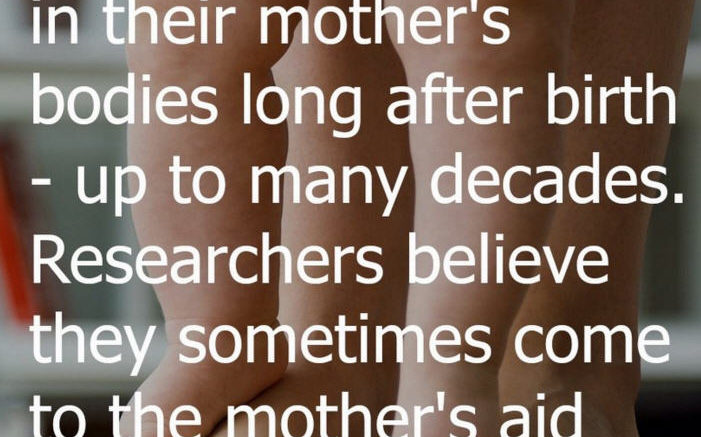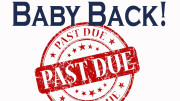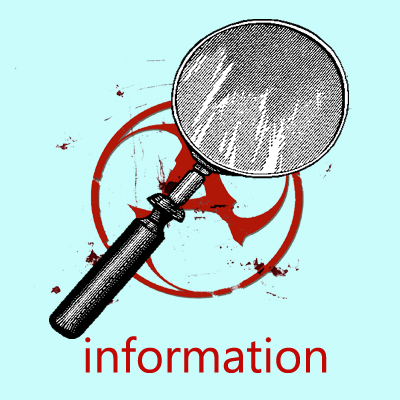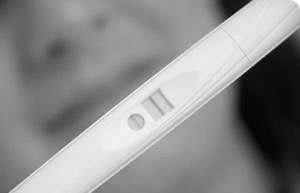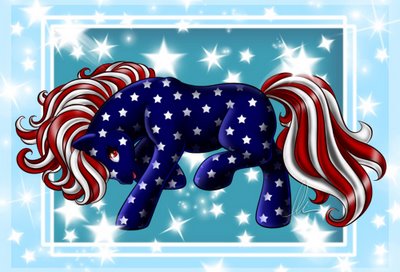The Birth Mother Experience Has No Borders
I am not an adoptee. I cannot speak about what it is like to be an adoptee from a place of personal understanding. I would know nothing about what it means to be an adopted person at all if not for listening to adoptees explain it. Yet, I have created a human being who is an adoptee. Over fifteen years ago, I realized that the most important teachers to listen to in the adoption arena are the adoptees, who spoke, at the time, for my yet unfound son.
Yes, I am a birthmother. The path that led to the separation of myself and my first born child is in many ways typical and in many ways completely my own. The next thirty years of the journey that is my life as a birthmother is also very typical and still very uniquely my own. I do not want to get too caught up in my personal situation, my story, just yet. Rather, I want to look at the commonalities among mothers: both those who have relinquished and those who have not. For as the adoptees have taught me, I understand that most people have no idea what it is truly like to exist in this lifetime as a birthmother. I have some insight.
Let’s Erase Our Differences
We often draw lines in the sand with adoption. We create differences and opposites, oppositions and exceptions. We might find society pits adoptive parent vs. natural parents, domestic placements vs. international. Our conversations are emotionally charged, feelings are conflicted, truthful words offend, toes get stepped on.
“This does not apply to me,” we say. “I am not like that. My situation is different.”
So we will talk in basics facts first. Forget the details that make things different.
I am a mother who relinquished her child to adoption and that the foundation in adoption makes what I can share, hopefully relevant, hopefully useful, definitely honest.
Let us pretend that a huge wave came up and washed away the lines in the sand: my experiences, my story is now relevant to yours just based on my motherhood alone.
My story is now yours, my words are your mother’s, for motherhood is universal.
From a Vast Pool of Humanity: We Are the Same
It’s a pretty simple concept if we look at the big picture.
No matter where we came from or how we got here, we are all human. We are born, we live, and we die. We have bones, hearts, brains, and teeth. We are cut and we bleed. We cry, we mourn, we hurt, we laugh, and we love. Black, white, yellow, red, and brown; big US cities or the rural south, China, Korea, Russia, India, and Guatemala. We are all human.
The basic core of our human existence is the same: Birth, Life, and Death.
The driving forces behind our humanity are also similar: love, desire, anger, fear, hope, faith, and revenge. The universal good vs. evil, black or while, light or dark, male or female, yin or yang. These themes occur again and again in literature, art, and religion as conflicts and quests. All are used to convey both answers and questions regarding the need to understand life and how we fit in. Oral and written histories give us archetypal victims, heroes, villains, and tricksters appearing from the Bible to Dante’s Inferno, from Shakespeare to Star Wars, and The Odyssey to Harry Potter; they all play out conflicts and resolutions.
These are the basic values of humanity repeated and filtered through our own personal situations, dictated by geography, economics, government, faith, and culture. The names in the stories might differ. The language and cultural touch points will be altered. But, the question for understanding human nature remains the same.
For instance, all peoples have creation stories, worship of gods, rituals of rites of passage and adulthood, mourning of the dead, beliefs in an afterlife, bonding and marriage, power structures, and authority. We see this again and again all though human history.
Humanity Beyond Cultural Norms
If a man dies, he is mourned. Whether his family sits in Shiva, attends a wake, casts a Viking funeral pyre, or mummifies him; whether he was a comrade or an enemy in battle, someone, someplace, probably does miss him. His mother cries. His wife wails. His children long for him again. We all face death eventually. The core human experience – death – equals losses for the living. How he is mourned, how it is expressed, and what grief is acceptable will be different based on his culture and personality. But, the feelings of death are the same.
Culture is defined as:
“Values comprise ideas about what in life seems important. They guide the rest of the culture. Norms consist of expectations of how people will behave. Each culture has methods, called sanctions, of enforcing its norms. Sanctions vary with the importance of the norm.” (source)
Our cultures teach us how to look at the experiences of life: how to react to them, what we should think is important, and what we should value. Adoption is really but a sanction, a way of enforcing a culture’s norm in a way, but behind what is taught, is the core human value that transcends the cultural differences.
We can look at motherhood as a basic tenement of life, much like death, because no matter what we all are created from the genetics of two other humans. Even with today’s technology, someone still must give birth to create a new life. Looking at motherhood as a universal human experience goes deeper than whether women have choices or not, whether mothers are revered or not, or whether society supports motherhood or not. It means we have to allow ourselves to accept some basic truisms about mothers as a simple matter of fact.
Because we are all born somehow. Our first moments in life are always after birth and, in that, we are the same.
Biology Is Not Location Based
We know more things now scientifically about the nature of birth and how human hormones factor in. It has been found that in the birth process hormones, such as oxytocin, are released from the mother to foster bonding with her infant. Studies show that post birth bonding is very close to what occurs when we fall in love. The same hormones are released, and a mother and newborn will stare into each other’s eyes, mimic each other’s gestures, crave frequent touch, and have a great need to be near each other. This creates the need for a mother to want to protect her baby, to care for it, to nurture it, and to sustain life.
Morphine-like hormones, commonly called endorphins, also play important roles in the birth process. Up to the birth of the baby, both mother and fetus release their own endorphins so that during the hour following birth, they are still impregnated with opiates. It is well known that opiates induce a state of dependency. When mother and baby haven’t yet eliminated their endorphins and are close to each other, the beginning of a deep bond is created.
It is not only the mother who is releasing hormones during labor and delivery. During the last contractions, the fetus is also releasing a high level of hormones of the adrenaline family. One of the effects of this is that the baby is alert at birth, with eyes wide open and pupils dilated. Mothers are fascinated by the gaze of their newborn babies. It seems that this eye-to-eye contact is an important feature of the beginning of the mother-baby relationship, which probably helps the release of the love hormone, oxytocin. Both mother and baby are in a complex hormonal balance that will not last long and will never happen again.
This has nothing to do with where you are born, what culture you live in, how you are taught to look at the love, sex, and family life that got you there. It is pure science. It is fact. It is instinctual. It is hardwired in our brains. It is humanity.
That’s just the simple science of birth, but once again universal.
There are no lines separating us here, no boundaries, no differences in race, country, or in time. There are no lines, either, separating a “normal” birth process from one that ends up as an adoption. One cannot just turn off those bonding hormones no matter what legal paperwork might be later signed.
The Culture of Adoption Conflicts with Humanity
Adoption lore has us believe that the “birth” mother is wired differently somehow.
The very premise of adoption is banking on that difference to make it work. All the fantastic stereotypes that we see in the media: on the talk shows, all of the horror stories that we hear, the stories that make us see adoption beginning with the “unwanted” child, and finalizing in a happy ending. They are all based on the concept that the mother gives birth and can walk way. We try to pretend that she is immune to the natural hormones, immune to the core foundation of humanity. That she has to be. Otherwise how could this happen? How could she do such an unspeakable thing as leave her child behind as it goes against some of our prime values as a people?
Take a moment to think about typical Hallmark sayings about motherhood. Think about the things we say, think, and feel when we hear: of a mother whose child was abducted or a mother whose child was murdered; the mother who moved mountains to find medical treatment for her child or fought a school system; or just a feel good story where she worked extra hours to support her child or help them follow their dreams.
- “Never get in between a mother and her cub.”
- “There is nothing worse in life than a mother who must bury her child. “
- “A mother will kill or be killed to protect her children.”
These ideas are what we think about most mothers, but, somehow, we cannot apply the same depth of a mother’s feeling to the mother who chooses to walk away from her baby in the name of adoption.
Again, for if we did, it will cause a conflict: the cultural sanction that is adoption does not correlate with the human understanding of a mother. So, we create differences in our minds, in the use of language, in the beliefs we use to shape our understanding. We make statements, such as:
- “Anyone can give birth, but a real parent is the one who (fill in the blank)”;
- “Giving birth doesn’t make you a mother, but (fill in the blank) does”.
A birthmother does not fit the bill of a “real ” mother. Something has to be missing in her. Something must be different about her that she can put down her child and walk away, that she can “move on.” Is she colder? Does she not care? Is she broken and damaged inside? Or is it that she is nobler, more selfless, self-sacrificing for a greater good and that allows her to be able to escape the confines of her humanity and the bonds of “real motherhood”? It doesn’t matter if you have negative or positive thoughts about birthmothers in general. You can think them selfless, selfish, heroines, saints or whores; the issue is that she is thought of as separate, different, not like “real mothers.” Either way, lesser or above the norm, she is not quite the same. She is not a regular mother.
Yet, she is not a different species of human. There is not a “birthmother” gene. There is not a nerve that is cut. There is not a build up around her heart. She will give birth like every other mother has before her and every mother after. The very act of giving birth creates a mother even if legal paperwork or extenuating circumstances leave her unable to parent.
What We Know About Every Mother
Somewhere, a woman has just conceived a child.
Nothing too remarkable about this really, as woman conceive, or don’t, every day. It’s part of nature. How we live on as a species. The result of sex, regardless of whether love or violence is involved. It’s a way of life.
We don’t know much about this woman: whether she loves the father of this child and he loves her; whether she laid down with him as obligation and duty; whether she gained any pleasure from this union, or gritted her teeth and cried until he was done with her. Did she choose to be with him or was it forced? Was it for affection or because he offered her a chance? Maybe he was the only one. Maybe he was one of many that she chose. We will never know.
We can assume her life is hard simply because the well off do not relinquish. We do not know if she works long hours or if her life conditions were a result of choices made. We don’t know if she accepts her lot, prays for easier times, dreams of something better, or just is thankful for life every day. What goes on inside her mind, her heart, we might never know.
She is faceless. She is nameless. She is no one. She is every one. Just a heartbeat away. New life begins to stir and she is on a path to motherhood.
Maybe she planned, hoped, and prayed for this conception. Maybe it was an accident, an oops, ill-timed, unprepared. Maybe it was an affair, or she is seen as too young or just doesn’t believe she can handle one more thing.
We don’t know. She does, but she can’t tell her story. She has no voice right now.
Like any woman, the first signs are common. A missed period, swollen breasts, increased appetite, and nausea. She begins to see and feel, to know, the changes in her body. She begins to wonder, whether with happiness or horror, if it could be true. And, soon she knows that indeed she is pregnant, with child, and about to become a mother.
Even in the most horrific of circumstances, there is something amazing about the ability to reproduce life. Your body becomes not your own, but a machine with a purpose. You eat what the embryo needs for nutrition. It drains the calcium from your bones. Your energy is sucked out as all your cells have only one primal need; to feed and create a new version of yourself. Not only just the physical body becomes solely focused on the life inside you, but also your mind, your heart. You are aware that you are not alone. Not an island. Not living just for yourself anymore, but for another. This life within becomes your secret friend, part of you, but an individual too – even if you don’t want it there. This state of being part of you, but not will continue throughout space and time.
Maybe she hides her swelling midsection and prays no one notices. Maybe she flaunts her fertility like a Buddha in the sun. By instinct, she cradles her stomach if she should fall. Her hands run along her stretched skin. She feels hiccups and movement like a fish swimming, tickling her insides right below her heart. She learns the pattern of kicks and punches. She wonders and worries when the child is quiet. She laughs, perhaps, when a particularly strong thrust jars her hand resting on her belly. She feels the baby settle down when she walks, lulled to fetal sleep by the rocking movements of her steps, and plays a quiet poke and kick game late at night when all is quiet and baby wakes up. Is this the head? She thinks, was that a foot? As time goes on, movements become clear. She gasps for breath when baby stretches out and pushes her diaphragm. The sudden kick in the bladder causes the equally sudden need to urinate. And they exist, these two, in their own little world for the nine months that it takes.
Did they ever have a chance together? We might never know.
If she was a mother already, perhaps this child threatened the existence of others. Maybe she knew that no matter what, there was no way she could continue to do what was expected of her and be a mother, too. Not enough food, not enough money, not enough time, not enough support. Did she have that choice? Even if a vast cultural mindset separates us from ever knowing it all, we can wonder the basics of motherhood. What was she thinking as she laid there late at night? Kicks keeping her awake. Labor looming. Was there some hope in her heart or was she just resigned for the worst?
No matter what she hoped or prayed or dreaded, the time came.
We know she bled. Maybe she cried out in pain, maybe she was assisted, or maybe she labored alone. We know it hurt like no pain she has ever felt before, and, at times, she felt defeated and scared, that she could not go on. But she fought, pushed, and felt the relief as life force gave way, and, with a shudder, they were now two instead of one.
Did she have time to cradle her baby and drink in that tiny perfection? Was this babe swept away from her mother by another who feared the chance for affection with a doomed baby? Did our mother cry and beg, or did tears just run down her face in defeat and exhaustion? Did she feel her heart harden and her soul go cold as she turned away, not willing to look?
Does it Matter What We Don’t Know?
Maybe none of these things happened. Maybe all of it. Again, the details don’t matter in the big picture right now. What we will probably never know can be eclipsed by what we do. I can tell you that no matter what she planned, no matter what she was expected to do, no matter what her hopes and dreams were, what she felt she had to do, wanted to do, how she wanted to think, wanted to feel, even if she tried to fight it, tried to ignore it, she felt something.
No matter how hard you try, you don’t forget your baby. You don’t forget the feeling of kicking inside you. You don’t forget giving forth new life no matter where that life might go, what unknown oceans are crossed, what unheard of cities become home, what unfamiliar arms become love. Even if they have no choice, even if they have no options, even if they know that the very act that gives them great pain is the only chance for this new life. Even if they are told they must forget, they only learn to keep it closer to their hearts, wait for the darkest, most quiet part of the night to look inside their hearts and let the silent tears fall. Even if that pain inside wraps them, warps their vision of the child born, hardens her heart as means of survival, kills her soul, makes her walking dead. Even if she refuses to ever face the reality of her child ever again. She has not forgotten. There was pain in the loss no matter how it got there, what circumstances gave way, and whatever her version of the final outcome.
She remembers.
While we all are different. What we think, what we feel, the sum of all our experiences, we are still very much the same. We are human. Where there is a mother, the chances that she feels a great sense of loss connected to her separation from her child is very strong. For birth and motherhood are a core foundation of humanity.
She is a mother without her child, and so am I. Maybe an ocean separates our lives. A language might be an insurmountable rift. We might never look each other in the eye, but I know what lives inside her heart. I know her grief, I know her loss, I know her pain. You cannot hear her story, but you can hear mine. What I can tell you is how it feels like to live as a mother without her child. So, when you read my words, forget the details, forget what makes me different from you, forget the things that separate us. Just forget what you think you know about women who relinquish their children to adoption. Just listen to the voice of a mother.
It is all the same for motherhood knows no boundaries and it is truly universal.
This is pretty much the presentation I gave in 2007 at the KAAN conference held in Boston. The other big piece of the presentation has already been turned into “Learning to Ride the Waves: Birth Mother Grief”. I was invited to speak at KAAN by my dear friend Margie Persheid of Third Mom fame. It was mere months after meeting my son for the first time and I was literally the only birth mother at this conference. I was sure that everyone listening had their eyes glazing over. but I guess that was just my own self doubt. The greatest honor was that Betty Jean Lifton sat there and heard me speak and even asked a question afterwards about how I could basically “be Okay” I didn’t know the answer at the time and it took a few years after her death before I found out. Someplace here on this site there is a blog post about that too.
Later on this piece would be published in LGA, but since that site is now off the radar, I am republishing.
